- Home
- Deborah Blum
The Ghost Hunters Page 14
The Ghost Hunters Read online
Page 14
“M. says roundly to the Theologian, ‘If the results of our investigation are rejected, they must inevitably carry your miracles along with them,’ ” he scrawled anxiously in his diary. In the privacy of his study he confessed that his colleague was probably right. The quest for proof defined much of their efforts and of spiritualism in general. No wonder that people embraced the idea of physical proof, even to the ridiculous appearances of levitating furniture and materialized spirits. The rational man or woman needed some substance to his saints, Sidgwick agreed, with one caveat: “This is, I doubt not, true, but is it wise to say it?”
IF ONE DOUBTED the demand for physical proof, one needed only to watch the latest craze in spiritualism, “the talking board” phenomenon, sweep across the United States, catching everyone from workingmen to children in its fascination.
“Planchette is simply nowhere,” declared the New York Tribune, compared to this newest tool for talking with the dead.
Rectangles of shellacked and polished wood, talking boards had the words yes and no printed in the upper right and left corners. The entire alphabet was inscribed across the center. In the lower corners were the words Good Eve (for “good evening”) and Good Bye. The board was simple to use, relying on a planchettelike device that could slide across the surface, its point indicating answers. Users would sit on either side of the board, their fingers resting on the pointer, and watch for it to move, pointing to “yes” or “no” or using the letters to spell out more complicated sentences.
“I know of whole communities that are wild over the ‘talking board,’ as some of them call it,” one man told the Tribune reporter, and the eerie stories they told about its powers contained “things that seem to pass all human comprehension or explanation.”
Talking boards worked faster than spirit raps or table tiltings. They were easier to read, by far, than the scribbles of a pencil-wielding planchette. And they were so popular that they were soon being mass-marketed by companies including Sears Roebuck, who determined that they needed a more commercial name. By the late 1880s, the boards would be rechristened Ouija boards (or “yes-yes” boards, from the French oui and the German ja.)
The boards’ success, their apparent proof of spirit communication, also drove their popularity: “One gentleman of my acquaintance told me that he got a communication about a title to some property from his dead brother, which was of great value to him,” an excited user told the Tribune. “Attempts are made to verify statements that are made about living persons, and in some instances they have succeeded so well as to make the inquirers still more awe-stricken.”
GURNEY WAS so LOST in his search, so consumed by his determination to make others see what lay before him, that he had almost forgotten about his pretty wife and sweet young daughter.
Kate Gurney cared nothing for the metaphysical debates and theological questions in which her husband had buried himself alive. She liked parties, gossip, and lively conversation. Edmund seemed such fun when she married him; now he had become so very serious and, really, a bore. He encouraged her, of course, to enjoy society without him. If there was any advantage to her situation, it was that her handsome husband’s chronic inattention and habitual absence gained her a bit of sympathy. Even Myers had heard the sad plight of Kate Gurney discussed in elegant drawing rooms.
Phantasms of the Living sprawled through the Gurneys’ home. Papers overflowed Edmund’s study, spilling out onto furniture and the floor. It lay in packets, in piles, in stacks and drifts, so that the elegant Mayfair dwelling seemed at times submerged in Phantasms, just as Edmund’s life had become submerged. When the physicist Oliver Lodge, one of the SPR’s telepathy researchers, came to visit, he found himself rather alarmed at the state of the Gurneys’ paper-strewn home, the disorienting sensation of swimming through a vast ocean of documents. He wondered if Phantasms of the Living was worth its cost in time and reputation: “Attention to such gruesome tales seemed to me a futile occupation for a cultivated man.”
Surrounded by his documents, his fair hair disordered, his blue eyes shining, Gurney convinced Lodge that such concerns were unnecessary. His home might resemble chaos, but a pattern was emerging from the flood, an answer floating just under the dark surface of this river of sorrow.
The emerging pattern derived from number and repetition, in the way that so many stories of the dead echoed each other, by their weird consistency. As mystery piled on mystery, strangeness upon strangeness, each ghost story—based on diaries from the past and letters in the present—gained power from each other:
A British nobleman was traveling with friends in Sweden. They decided to make a long day’s journey toward Norway and finally halted, exhausted, at a coaching inn.
It was one o’clock in the morning when they stopped, an icy winter night. The nobleman was so thoroughly chilled that once he had stumbled into his room, his teeth still chattered in his head. He decided to see if a steaming bath would thaw him out.
“While lying in it and enjoying the comfort of the heat, after the late freezing I had undergone, I turned my head around, looking toward the chair on which I deposited my clothes, as I was about to get out of the bath.”
Sitting on the chair was a man he’d once known well. They’d been the closest of friends as university students together. But his friend had joined the Civil Service and gone to work in India; it had been many years since they’d spoken.
The nobleman was so startled that he stood up, slipped, and went sprawling onto the floor. When he pulled himself up, his friend was gone.
It was such a strange moment that he couldn’t bring himself to tell anyone. But he wrote it down, noting the date in his diary—December 19, 1799. And he wondered what it meant; he worried about his friend—and himself.
“No doubt,” he wrote to Gurney, “I had fallen asleep and the appearance, presented so distinctly to my eyes was a dream.” Except that he could not quite persuade himself of that. He had never had a dream that felt quite so vivid, quite so compelling, and quite so awake.
And except that shortly after his return home, he received a letter from India, announcing his friend’s death and giving the date as December 19, 1799.
The woman woke suddenly in the night: “I felt uneasy, and sat up in bed.” She looked around the room and saw one of her sons, Joseph, standing at the door.
His head was heavily bandaged and his face bruised and bloody, especially about the eyes. He was wearing a dirty white nightdress. He stood silent, looking at her “with great earnestness,” and then seemed to fade away.
At breakfast she told her family—four daughters gathered round the table—that she was prepared for bad news about Joseph. They laughed it away: “It was only a dream and all nonsense.” But within days, in the midst of that frozen January of 1856, she received the news; her son had been killed in a steamer collision on the Mississippi, during which a mast had split apart and fallen onto his head.
Another brother, who’d rushed to the accident, had been there when Joseph died, calling for his mother. His head had been wrapped with bandages, as it “was nearly cut in two by the blow and his face dreadfully disfigured.” Joseph had died wearing a white nightdress, soiled with blood and dirt.
The time of his death, almost to the minute, matched the moment when his mother had seen him watching her from the doorway.
The theater was crowded in Toronto. The merchant was taking a night off during a trip from England, relaxing in the company of a Canadian businessman.
He was looking down from the dress circle where they sat when suddenly a shadow, or a flicker, in the pit below caught his attention. He leaned over and saw a man standing below, looking up at him. He leaned further, and “I recognized in the features my twin brother, who at that time was in China.”
His brother stood half in shadow, half in an oddly golden light that made his features startlingly clear. “I instantly exclaimed to my friend, ‘Good God! There is my brother!’ pointing at the same time to the
figure.”
“I cannot see anyone looking up here,” said his friend, peering over the railing. But the merchant was so excited that he rushed down into the pit, calling for his brother. There was no one standing, no one looking up, no one resembling his brother in the crowd around him. “I am not superstitious, nor a spiritualist, but could not get over the startling circumstances for some time.”
When he returned to England, he learned that his brother had died at the French Hospital in Shanghai on October 6, 1867. It was the night the merchant had been at the theater in Toronto.
The woman was sitting in her mother’s bedroom when her seven-year-old nephew came running, tumbling, into the room.
The boy was pale and breathless: “Oh, Auntie, I have just seen my father walking around my bed.”
She replied, “Nonsense, you must have been dreaming.” The child’s father was traveling in another country, she reminded him, on business far from home.
But the child would not be comforted. He refused to return to his room. So his aunt tucked him into the bed with her. An hour or so later, she rolled over, glanced idly toward the fireplace, and saw her brother sitting in a chair by the fire.
“What particularly struck me was the pallor of his face.” Her nephew was asleep. “I was so frightened, knowing that at this time my brother was in Hong Kong, that I put my head under the bedclothes.” But she heard his voice, calling her name. Once, twice, three times, and then it faded away.
In the morning, she told her mother, who advised her to make a note of it. She carefully wrote it down, 10:00 p.m. on August 21, 1869.
When the next mail arrived from China, there was the letter telling of her brother’s death from heatstroke on August 21, 1869.
A British clergyman was taking a summer evening walk over the downs near Marlcombe Hill. He was composing in his head a congratulatory letter to a good friend whose birthday would be two days later, on August 20, 1874.
He had barely begun when a voice spoke sharply in his ear: “What, write to a dead man; write to a dead man?”
The clergyman turned hastily around, expecting to see someone behind him. There was only the fading light glazing the grasses with gold. “Treating the matter as an illusion, I went on with my composition.” The same voice spoke again, this time louder and with some impatience: “What, write to a dead man; write to a dead man?”
Again, he turned around. Again, there was no one there. But now he was afraid that it wasn’t an illusion.
After hurrying home, he wrote the letter and sent it anyway. “In reply [I] received from Mrs. W the sad, but to me not unexpected, intelligence that her husband was dead.”
The man jolted upright in bed. It was four o’clock in the morning. Someone had just gripped his hand. The touch was as cold and thin as water.
He exclaimed to his wife, startled by the feel of those chilly fingers. He caught a glimpse of a woman leaving; there’d been something about the way she moved, the set of her dark head, that had reminded him of his aunt.
But the man and his wife were in Nottingham, and on this early June morning in 1880, the aunt was supposed to be on a steamer heading for the United States.
He leapt up to check the front door of the house. It was on the chain. He returned, saying to his wife that he feared his aunt was dead.
“You’re dreaming,” she replied. Her diagnosis was that he’d eaten too large a supper before going to bed.
Two weeks later, they received a letter from his aunt’s solicitor. She had died at sea on the day that he’d felt that ice-water hand in the middle of a summer night.
Gurney called the stories “crisis apparitions” because of their critical timing—the voice, the touch, the shape, all seemed to appear close to a moment of extreme injury or death. Out of thousands of responses, he’d kept only seven hundred for the book, only those with some tangible evidence behind them—diary notations, conversations with others at the time of the event, death certificates, newspaper coverage and obituaries, letters of corroboration, details such as the theater program from the businessman’s evening at the opera to support his story and its timing. The investigators conducted personal interviews. They calculated time differences between place of death and place of vision. The compiled data accounted for most of the piles of paper that now inundated Gurney’s house and his life.
None of these spirits were the chain-clanking, blood-spattered, terrifying ghosts of fiction. Sidgwick, who enjoyed telling a good ghost story—once enthralling a roomful of children with his harrowing account of “The Bloodthirsty Bluebells”—often complained that real ghosts were never so much fun as the gore-streaked phantoms that appeared in novels. Even Gurney admitted that reading up on crisis apparitions was “far more likely to provoke sleep in the course of perusal than banish it afterwards.”
The apparitions’ power was in their very repetitiveness, the similarities of “unlooked for detail,” the consistent way the visions appeared and faded, the person after person telling the tale, the documents and the double checks. Everyone had heard the occasional similar tale once or twice. But as he and Myers told their colleagues, it was hard to explain “the effect on the mind of a sudden, large accumulation of direct, well-attested and harmonious detail.”
As Gurney insisted to Lodge, the stories might be monotonous, but they added up. He had no doubt about that. The question was—added up to what?
“IT is NOT from professional mediums—so numerous in the United States—from slate writing ‘materializations’ and kindred performances, that we can look for any enlightenment whatever on the positive side in the course of psychical research.”
So wrote Richard Hodgson, in the summer of 1886, in the summation of his formal report on slate writing, detailing the elegant cons that he had run with S. J. Davey. Hodgson emphasized that he and his partner had merely copied the craft of working mediums. “I may conclude with a warning which I wish to give, especially to our members in America, viz: that nearly all professional mediums are a gang of vulgar tricksters who are more or less in league with one another.”
The members of the American Society of Psychical Research needed no such reminder. Their annual report on mediums—barring the curious anomaly of Leonora Piper—had degenerated into a list of exposures of professional practitioners, seven in Boston alone within one year. “Such a state of things hardly tends to encourage [the] committee in the active pursuit of this class of phenomena,” the report stated.
The American scientists had been dismantling other spiritualist claims as well, such as a popular theory that sensitives gained their power from an unusual ability to detect magnetic signals. Joseph Jastrow of the University of Wisconsin led that investigation. Jastrow began with a simple demonstration. He used a dynamo to charge a large magnet, generating a magnetic field. He then asked self-anointed psychics, sitting in an adjacent room, to tell him when the field was strong and when it was not. The first experiments yielded impressively positive correlations, leading him to wonder if some of the participants could, indeed, “feel” the magnetic pulse.
But gradually, Jastrow became aware of another possibility. He himself could occasionally hear the rumble of the dynamo and a low clicking that sounded with demagnetization. So he surrounded the dynamo and magnet with soundproofing insulation and then repeated and repeated the experiment—exhibiting a dogged, Henry Sidgwick-like patience. In the following 1,950 tests of the sound-muffled magnet on ten mediums, all the results were negative. Or, as Jastrow wrote: “We conclude then that our experiments, as far as they go, fail to reveal any sensibility for a magnetic field.” His conclusion was that these professional mediums had no special talent, making, them at worst liars and cheats, at best victims of a mental illness that caused self-delusion.
The ASPR’s committee on haunted houses and apparitions had reached a similar conclusion regarding mental illness. Unlike Gurney and his colleagues, they saw no pattern of reality in haunted moments. They perceived instead a patter
n of insanity or instability. Even the strongest mind could falter, the ASPR researchers pointed out; the perception of a ghost could be no more than a moment of mental fragility.
A general diagnosis of mental illness was, in fact, the first conclusion that a significant number of the American scientists liked. It suggested, at least, that psychical research might be of some use in the study of human psychology, that belief in the supernatural might be used as a tool, helping to identify aberrant brains. It allowed the researchers to quit dabbling in the occult, make their way back toward more respectable pursuits. It suggested that the marriage of scientists and psychics had been ill conceived.
William James gloomily mailed the report to a friend, calling it “a rather sorry ‘exhibit’ from the ‘President’s’ address down.” The society seemed to prefer attacking evidence of the supernatural to exploring it. “I suspect it [ASPR] will die by the new year.”
DID THE PSYCHICAL research community plan to do anything beyond debunking mediums and discrediting supernatural claims? That was Alfred Russel Wallace’s rather plaintive question. Could a positive result be seen in their future?
For all his interest in spiritualism, Wallace had remained one of the more innovative and productive scientific thinkers of his time. In the years since he’d published his first paper on natural selection, he helped pioneer the study of color vision and its development. He’d researched alpine corridors, glaciations, and island environments, describing what would come to be known as the Wallace effect of reproductive isolation. He’d also practiced what he preached about scientists upholding ethical standards for the betterment of society. In 1885 Wallace had supported a minimum wage for workers and proposed the unheard-of idea that manufacturers should be required to label goods, specifying their contents.

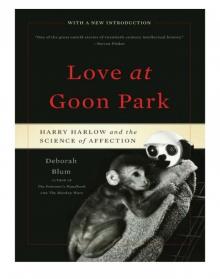 Love at Goon Park: Harry Harlow and the Science of Affection
Love at Goon Park: Harry Harlow and the Science of Affection The Poison Squad
The Poison Squad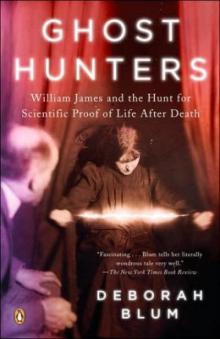 Ghost Hunters: The Victorians and the Hunt for Proof of Life After Death
Ghost Hunters: The Victorians and the Hunt for Proof of Life After Death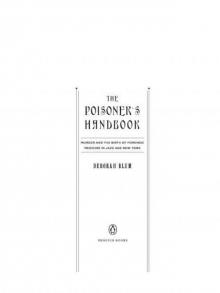 The Poisoner's Handbook
The Poisoner's Handbook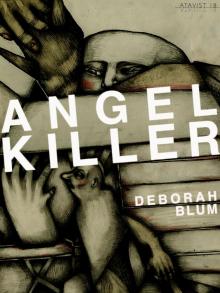 Angel Killer
Angel Killer The Best American Science and Nature Writing 2014
The Best American Science and Nature Writing 2014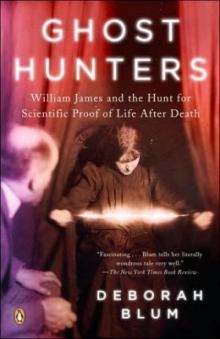 The Ghost Hunters
The Ghost Hunters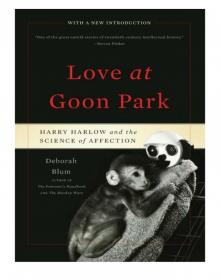 Love at Goon Park
Love at Goon Park